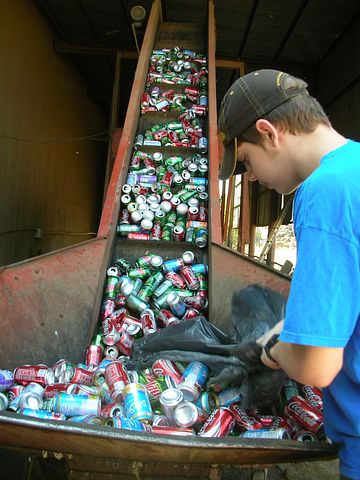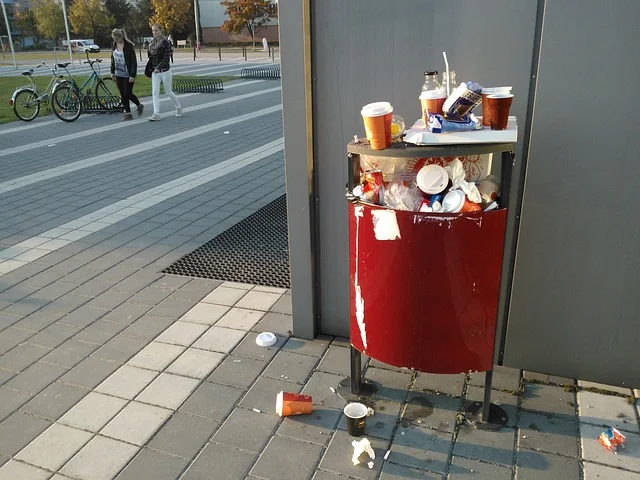Business wastes include those wastes that are produced by businesses, including waste made of paper, plastic, food, and other items. Businesses may squander resources in a variety of ways, including with money, time, and materials.
Some of those materials used turn to waste over time or after use and there is need to properly manage those generated business wastes to maintain sanitation and health.
Proper Business Wastes Management Guide

(1) Perform a waste analysis
A waste assessment is a procedure for determining, breaking down, and assessing the kinds and amounts of waste produced by a company.
It entails looking at the waste materials to see if there are any chances to reduce, reuse, or recycle them.
The following procedures may be used to perform a waste assessment for commercial wastes:
- Determine the wastes that are produced: Make a list of every item that your company discards, including cardboard, plastic, metal, food waste, office paper, and hazardous materials.
- Identify the waste sources: Then, locate the waste-producing places inside your company, including the manufacturing areas, offices, bathrooms, and common spaces.
- Measure the waste: Calculate the quantity of each kind of garbage produced at each source. You may do this by either measuring the volume or weighing the garbage.
Read Also: The Application of Biotechnology to Waste Management
- Investigate the waste: Analyze the patterns in the information you have gathered. Is there, for instance, a lot of paper trash coming from a certain location? Exist any wastes that are produced in significant amounts?
- Create a waste reduction strategy: Based on your study, create a strategy to cut down on, reuse, or recycle the trash your company produces.
This might include putting composting systems in place, initiating recycling programs, or finding new use for items that were previously dumped.
- Execute the plan: Implement your waste reduction strategy, then monitor the outcomes.
Make any required changes to the strategy to make sure it works.
You may find chances to cut waste and enhance your company’s environmental performance by completing a waste assessment.
Determine where and how waste is produced in your company.
You may then decide how to address the underlying causes of waste by better understanding them.
(2) Establish objectives
Setting waste objectives and targets may be a crucial component of a business’s sustainability initiatives.
Here are some objectives you may want to think about setting:
- Reduce overall waste generation: This might mean establishing a target to lower the amount of waste a company produces per unit of output or to lower the overall quantity of trash produced over a certain time frame.
Increase the amount of garbage that is recycled or reused rather than being dumped in landfills by setting a target in this direction.
- Reduce certain waste types: If your company produces a lot of a certain kind of trash, such as food scraps or plastic packaging, you may establish a target to cut down on that waste.
Establish a target to limit the amount of trash the company produces by implementing waste avoidance strategies, such as minimizing packaging or utilizing reusable containers.
- Work toward becoming “zero waste” facilities: Some companies have made it their mission to produce no garbage that is disposed of in landfills.
Although this may be a highly ambitious aim, it may also be a very effective approach to motivate sustainability initiatives inside the business.
Set objectives and milestones to measure your success as you minimize the amount of garbage you now produce.
(3) Use waste-reduction techniques
Strategies for reducing waste may increase productivity, save costs, and have a positive influence on the environment.
You may use a variety of tactics to cut waste in your company, such as material reuse and recycling, energy conservation, and process simplification.
Here are some suggestions for cutting waste in a professional setting:
- Reduce: Reducing the quantity of trash created in the first place is the first step in waste reduction. In order to achieve this, less materials and resources may be used, such as digital documents in place of paper or lasting, repairable items in place of disposable ones.
- Reuse: Instead of throwing away materials and items after a single use, look for methods to reuse them. A company may recycle shipping containers or packing supplies, for instance, or give gently used office furniture to charitable causes.
- Recycle: Establish a program for recycling resources that cannot be reduced or reused. Paper, cardboard, plastic, glass, and metal are possible examples of this.
It is often simple to get started since there are recycling programs in place in many areas.
- Compost: If your company produces food waste, you may want to set up a program to compost it so that you can create nutrient-rich soil.
Either on-site composting or local composting services are options for this.
- Educate: Ensure that every employee is informed about the waste reduction measures in place and motivate them to become involved.
To assist them in understanding the advantages of waste reduction and how they can participate, think about offering training and materials.
(4) Involve your staff
Encourage staff participation in waste reduction initiatives and take into account their suggestions while developing your approach.
Employee involvement in waste reduction efforts may be achieved in a number of ways:
- Encourage them to provide waste reduction.
- Suggestions: Employees may provide ideas and have special insights into areas of the company where waste is occurring.
- Include them in the execution of waste reduction.
- projects: Involving staff members in the design and implementation of waste reduction initiatives helps enhance buy-in and guarantee that they are executed successfully.
- Provide instruction and resources: Employees may better appreciate the value of waste reduction and be equipped to make a difference if given the information and tools necessary to decrease waste.
- Recognize and reward efforts: Employees may continue their waste reduction efforts and include their coworkers in the process if their efforts are recognized and rewarded.
- Integrate waste reduction into the corporate culture: Waste reduction may become a priority for all workers and motivate them to actively participate in waste reduction by being included into the organization’s values and objectives.
Read Also: Biomedical Wastes Complete Management Guide
(5) Track and evaluate development
To be sure you are making progress and to spot areas where you can improve, monitor and assess your progress toward your waste reduction targets on a regular basis.
You may use the following actions to track and evaluate your success in cutting down on business wastes:
- Determine your waste streams: List the many wastes your company produces, including paper, plastic, food waste, energy, etc.
Decide how much trash you want to cut or get rid of, then make SMART (specific, measurable, attainable, relevant, and time-bound) objectives to do it.
- Gather information: Calculate how much garbage your company produces on a regular basis.
This will enable you to monitor your development and pinpoint your areas for growth.
- Analyze the data: Use the data you have gathered to find patterns and trends in the way you produce garbage.
You may then choose the best remedies after understanding the fundamental causes of waste. Implement waste reduction measures, such as recycling, composting, reusing, and cutting down on consumption. To determine which of these tactics is most successful, keep an eye on the outcomes.
- Continually assess and correct: Keep an eye on your progress toward your waste reduction objectives.
To make sure you are moving forward and achieving your objectives, change as necessary.
(6) Constantly enhance
On a regular basis, look for ways to enhance your waste management procedures. This may include putting new techniques into practice, developing fresh approaches to material reuse or recycling.
Businesses may enhance their waste management procedures in a number of ways:
- Implement a waste reduction program: Businesses may save money on disposal expenses and lessen their environmental impact by finding methods to limit the quantity of garbage that is produced.
- Recycle and reuse: These practices may help cut down on waste and preserve natural resources.
- Use environmentally friendly products: Opt. for items that can be recycled or that are manufactured from recycled materials.
- Employee education: Inform staff members about the value of waste reduction and effective trash disposal.
- Measure and monitor waste production: Keep tabs on the quantity produced and the disposal techniques used.
This will make it easier to see areas that need development.
Work with a waste management firm that has a proven track record of sustainability and waste reduction as a partner.
- Set goals: Specify your waste reduction objectives and strive toward reaching them.
These actions may help organizations manage their trash better and have a less negative effect on the environment.

